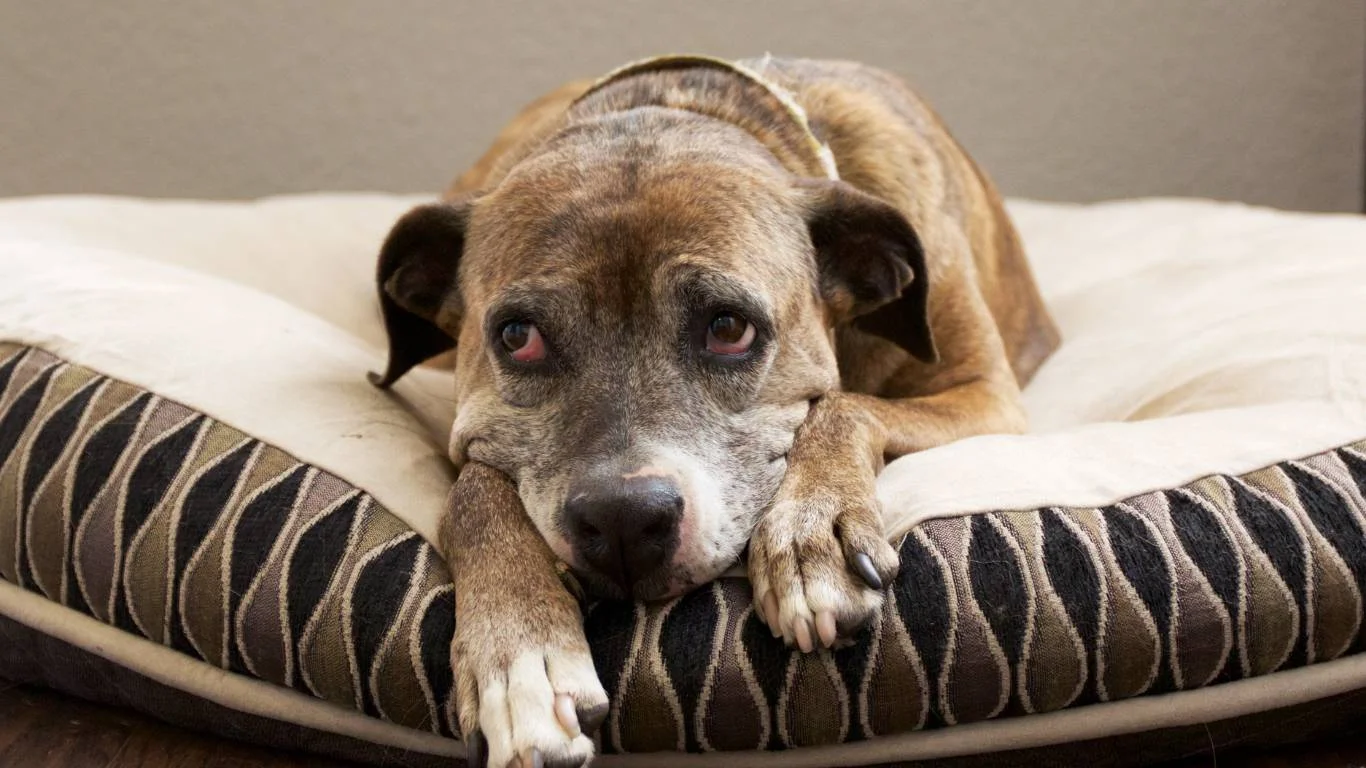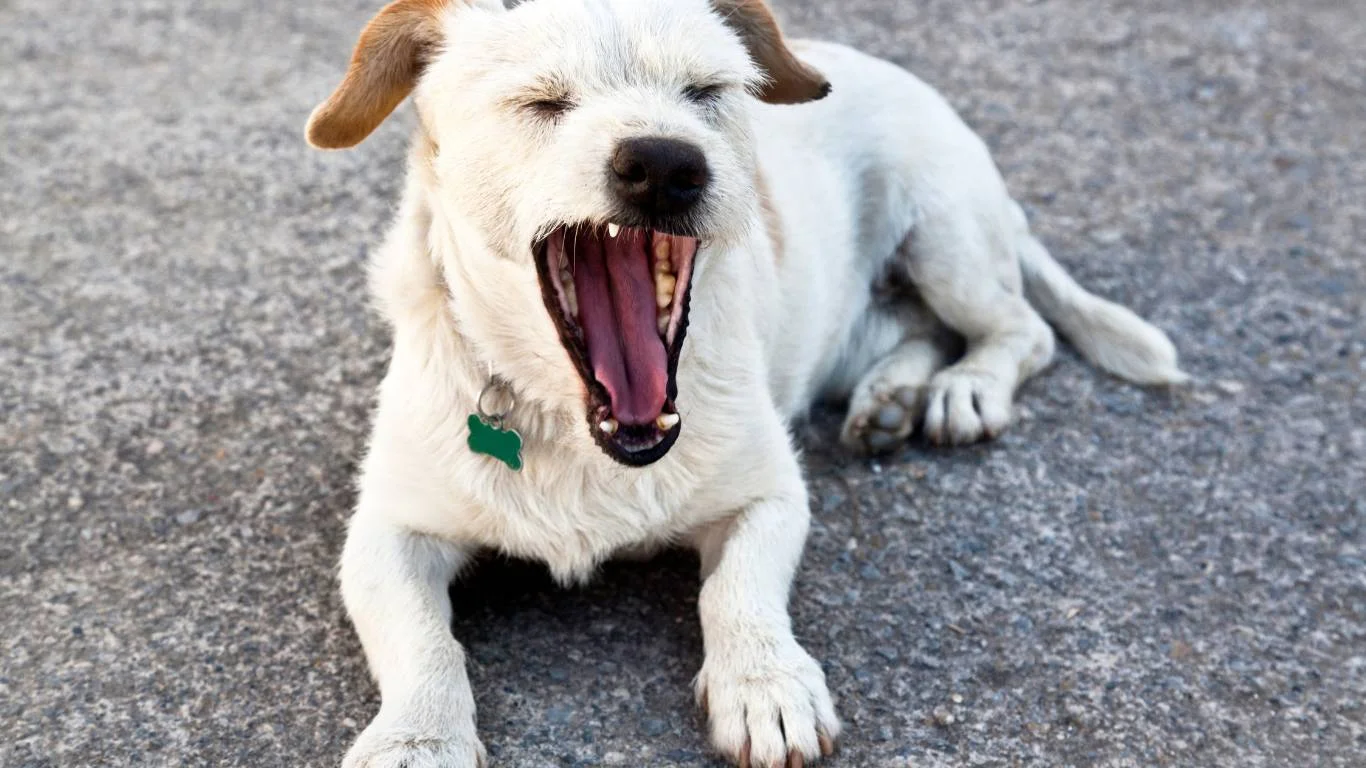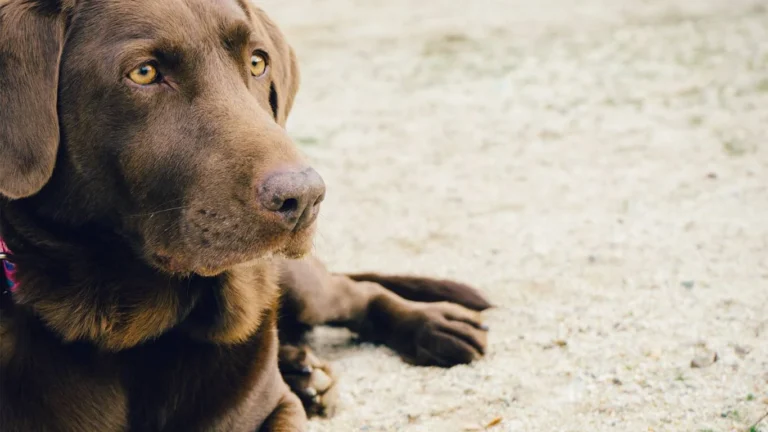How to Keep a Dog’s Paws from Cracking in Winter – Protect and Heal
Winter is a tough season for our furry friends, especially when it comes to their paws. If you’re a dog owner, you might have noticed that during colder months, your dog’s paws seem to be more prone to cracking, dryness, or discomfort. And it’s not just the cold weather to blame – the snow, salt, and ice can all contribute to causing serious issues for your dog’s paws. Having worked as a Veterinary Assistant with a focus on nutrition, I’ve seen firsthand how important it is to take extra care of your dog’s paws, especially when winter rolls around. You might be wondering, how do you keep a dog’s paws from cracking in winter? Well, don’t worry – I’ve got you covered with some expert tips and personal advice on how to keep those paws safe and healthy during the chillier months.
Understanding the Importance of Dog Paw Care in Winter
Before diving into the tips and remedies, let’s take a closer look at why winter can be especially tough on your dog’s paws. Just like us, dogs are susceptible to the harsh effects of winter weather, and their paws can get really uncomfortable and even damaged if not properly cared for.
Your dog’s paws are covered with tough pads, but these pads can still suffer from the cold, salt, and other irritants. In winter, these factors can dry out their skin, causing painful cracks or even bleeding. Over time, untreated cracks can lead to infections and make it difficult for your dog to walk or play. Not to mention, if you live in an area that salts the roads or sidewalks, those chemicals can get stuck in between your dog’s toes, causing irritation or more severe injuries.
To help protect your dog’s paws and ensure they stay comfortable, it’s essential to understand the causes of these issues and how to address them.
What Causes Dog Paw Cracking in Winter?
There are several common culprits when it comes to cracked paws during the winter. Let’s explore a few of them to help you better understand the problem.
Cold Weather
One of the primary causes of cracked paws in winter is the cold. As temperatures drop, your dog’s paws can become dry and brittle, especially if they are exposed to the cold air for extended periods. Dryness in the air can quickly lead to cracked, painful pads. The more time your dog spends outside in the cold, the greater the chance of their paws drying out.
Ice and Snow
If you live in an area with a lot of snow and ice, your dog’s paws are likely to come in contact with these elements on a daily basis. While they may love the snow, the ice and snow can create several problems for their paws. Not only can ice build up between their toes and cause discomfort, but snow can also cause the skin on their pads to become sore and cracked, especially if they’re walking through it for long periods.
Salt and Deicers
Many municipalities and homeowners use salt and deicing chemicals on sidewalks, driveways, and streets to prevent ice buildup. Unfortunately, these chemicals can be very harsh on your dog’s paws, causing burns or irritation. When your dog walks on salt-treated surfaces, the salt can stick to their paws and cause cracks and dryness. Furthermore, if your dog licks their paws afterward, they could ingest harmful chemicals, which could lead to stomach upset or poisoning.
How to Keep Your Dog’s Paws from Cracking in Winter
Now that we know what causes cracked paws, let’s get to the good stuff – how to prevent it. Here are some helpful tips to ensure your dog’s paws stay healthy and crack-free during the cold winter months.
1. Moisturize Their Paws
Just like our skin, your dog’s paw pads can benefit from regular moisture. Applying a special paw balm or paw wax to their paws can help lock in moisture and prevent dryness. These balms create a barrier against the harsh winter elements, keeping your dog’s paws hydrated. Look for products that are specifically formulated for dogs, as human lotions and creams may not be safe for them to lick or ingest.
Pro Tip: I personally use a natural, vet-approved paw balm for my own dogs during the winter. It’s made with ingredients like shea butter and coconut oil, which are both soothing and nourishing for their pads. I apply it daily, especially before heading out on walks.
2. Trim the Fur Between Their Toes
Winter can cause the fur between your dog’s toes to mat and clump together. Not only does this create a cozy home for salt and ice to build up, but it can also make it more difficult for your dog to walk comfortably. Regularly trimming the fur between their toes helps keep it from becoming tangled, and it makes cleaning their paws after walks much easier.
It’s a good idea to use rounded-tip scissors or a safe trimmer when doing this, as it’s easy to accidentally nick their skin. If you’re unsure, a professional groomer can help.

3. Use Protective Booties
While not every dog is a fan of wearing booties, they can be a lifesaver when it comes to protecting your dog’s paws during the winter months. Booties help prevent exposure to the cold, snow, ice, and harmful salts. They also provide additional traction for your dog, which can be helpful on icy surfaces.
If you’ve never tried booties before, it might take a little time for your dog to get used to wearing them, but the effort is worth it. Start by having your dog wear the booties indoors for short periods to get them used to the sensation. Once they’re comfortable, you can take them outside for a winter walk, knowing their paws are fully protected.

4. Clean Their Paws After Walks
After every winter walk, make sure to clean your dog’s paws thoroughly. This helps remove any salt, chemicals, or debris that may have stuck to their pads. You can use a damp cloth or a paw-cleaning tool specifically designed for this purpose. Some people even use baby wipes or paw wipes that are gentle on their dog’s skin.
Tip: Don’t forget to dry their paws completely after cleaning, as moisture can also cause irritation or freezing when they go outside again. A dry towel or hairdryer on a low, cool setting can help ensure their paws are completely dry.

5. Keep Your Dog’s Nails Trimmed
Long nails can affect how your dog walks and can cause uneven pressure on their paw pads. This can lead to paw pad irritation and, in the winter, can make your dog’s paws more vulnerable to cracks. Regular nail trimming ensures your dog’s paws stay in the best shape possible.
If you’re unsure how to trim your dog’s nails or if your dog is very sensitive about their paws, consider visiting a groomer or your vet. Regular nail trimming, especially in the winter, can prevent a lot of paw-related issues down the line.
What to Do If Your Dog’s Paws Are Already Cracked
Now, we’ve covered some great ways to prevent your dog’s paws from cracking, but what if your furry friend is already dealing with some painful cracks? Don’t worry – you can still help them heal and get back to their usual playful self. Here are some steps you can take if you notice your dog’s paws are already cracked or injured from winter weather.
1. Clean the Affected Area
If your dog’s paws are cracked or injured, the first thing you want to do is clean the area to prevent infection. Gently wash the affected paw with lukewarm water to remove any dirt or debris that may have gotten stuck in the cracks. Avoid using harsh soaps or chemicals, as these can further irritate your dog’s sensitive skin.
Pro Tip: You can use an antibacterial paw wash or even a mild saline solution to help disinfect the area without causing irritation. Just make sure to dry the paw thoroughly afterward. Leftover moisture can lead to fungal or bacterial infections, which would make healing much harder.
2. Apply Healing Balms or Ointments
Once the paw is clean and dry, it’s time to apply a healing balm or ointment. There are many products available that are specifically designed to treat cracked or dry paws. These balms often contain soothing ingredients like shea butter, beeswax, and coconut oil, which can help lock in moisture and promote healing. Look for products that are safe if ingested, since your dog will likely lick their paws after application.
My dogs have been known to lick everything in sight, so I make sure to pick products that are safe to ingest. It also helps to apply the balm just before bedtime so that it has time to absorb without interference.
3. Limit Outdoor Exposure Until Healing
If your dog’s paws are cracked, it’s best to limit their exposure to the elements until they heal. While you may be itching to go for a walk, try to keep them indoors and avoid walks on rough terrain or in icy conditions. If they do need to go outside, make sure to protect their paws with booties or carefully monitor their time spent outside.
Too much exposure to the cold and salt will only worsen the cracks and delay the healing process. Think of it like giving your dog a little rest – just like we need to stay off a sore ankle, your dog needs time to let their paws recover.

4. Keep Your Dog from Licking Their Paws
If your dog’s paws are cracked or sore, they might be tempted to lick them, but this can actually make things worse. Licking can introduce bacteria and dirt into the cracks, which can lead to infections. Plus, it can prevent the healing balm or ointment from staying in place long enough to work its magic.
To prevent licking, you can use a protective cone or an inflatable collar. If your dog doesn’t like wearing these, try distracting them with toys or treats while their paws heal. With patience and a little bit of restraint, your dog’s paws will be feeling better in no time!
How to Protect Your Dog’s Paws After They’ve Healed
Once your dog’s paws have healed, it’s essential to take preventive steps to ensure they don’t suffer from cracked paws again. Here are some ways to protect your dog’s paws long-term:
1. Regular Paw Care Routine
Now that you know how important it is to take care of your dog’s paws, make it part of your regular grooming routine. This doesn’t have to be a big chore – it can be as simple as wiping down their paws after walks, checking for any debris between their toes, and applying a paw balm or wax when needed. Keeping their paws healthy is all about consistency.
Personal Tip: I’ve found that incorporating paw care into our nightly routine works best for us. After a day of outdoor adventures, I’ll check their paws, wipe them down, and apply a little balm before bed. It’s easy to forget, but doing it nightly helps maintain healthy paws year-round.
2. Consider Paw Protection on Walks
If your dog is particularly prone to cracking or dryness, you may want to consider applying a paw protection balm before every walk. Some balms are designed specifically for outdoor use and can help protect your dog’s paws from salt, ice, and rough terrain. This can be especially beneficial in the winter when the elements are harsher.
If your dog is very active and spends a lot of time running around, you may also want to consider getting a pair of booties to provide extra protection. These can help guard against injury from rough or icy surfaces while also keeping their paws dry and safe from chemicals.

3. Adjust Walk Times
Another way to protect your dog’s paws during the winter months is to adjust your walk times. Try to avoid walking during the coldest parts of the day, and choose midday when temperatures are slightly warmer. This will help reduce the likelihood of your dog’s paws getting too dry or cracked from prolonged exposure to the cold.
Additionally, avoid walking during or immediately after snow or ice treatment. Salts and deicers can be very damaging to your dog’s paws, so try to time your walks when streets and sidewalks are clear of these chemicals. You can also rinse their paws off after walks to ensure no harmful residue remains.
4. Pay Attention to Your Dog’s Diet
What you feed your dog plays a significant role in their overall skin and paw health. If your dog’s diet lacks certain nutrients, like omega-3 fatty acids or vitamins, their skin (including their paws) may become dry and more prone to cracking. A balanced diet, rich in healthy fats and essential vitamins, can go a long way in keeping their skin supple and healthy.
Pro Tip: Adding a fish oil supplement to your dog’s meals is a great way to boost their coat and skin health. Omega-3s help promote healthy skin from the inside out, which can prevent dryness and cracking. Always check with your vet before adding supplements to your dog’s diet to make sure it’s the right fit for their needs.

When to Seek Professional Help for Your Dog’s Paws
Even with the best care, there are times when your dog’s paws might need a little extra attention from a professional. If you’ve followed the preventive tips and your dog’s paws still seem to be suffering, it could be a sign that there’s an underlying issue that requires expert treatment. Here are a few signs to watch out for that may indicate you need to consult your vet:
1. Persistent Cracking or Bleeding
If you’ve been moisturizing, keeping their paws clean, and applying healing balms, but your dog’s paw cracks aren’t healing, it may be time to seek veterinary help. Persistent cracking can lead to infections, and if the cracks are deep enough to cause bleeding, this is a serious concern that should be addressed by a professional.
In cases where the cracks are not healing, your vet may prescribe topical ointments or recommend a more specific treatment to help your dog’s paw pads heal properly. Sometimes, underlying issues like allergies or an autoimmune disorder can contribute to chronic paw problems, and a vet can help determine if that’s the case.
2. Excessive Licking or Biting
If your dog is excessively licking or biting at their paws, it could be a sign that they’re experiencing more than just mild irritation. Constant licking could lead to further injury and infection, so it’s important to address the issue as soon as possible.
Your vet will be able to determine if there’s an infection, injury, or even something like fungal or bacterial growth that’s causing your dog to lick excessively. In some cases, they might prescribe a cone to prevent further licking, or in more severe cases, they may recommend medication to manage pain or infection.
3. Difficulty Walking
If your dog is limping or having difficulty walking due to painful paws, it’s crucial to seek professional help. Difficulty walking may indicate that the cracks are deep enough to cause internal damage, or it could be a sign of an infection that’s making movement painful for your dog. A vet will perform a thorough examination and might suggest x-rays or other diagnostic tests to rule out any serious injury or condition.
Common Misconceptions About Dog Paw Care in Winter
There are a lot of myths and misconceptions floating around when it comes to dog paw care in winter. Let’s take a moment to clear up a few of these so you can avoid any confusion and ensure your dog’s paws get the best care possible.
1. “Booties Are Unnecessary for Dogs”
One of the most common misconceptions is that dog booties are unnecessary. Some dog owners think their dogs will be just fine without them, assuming their paws are tough enough to handle the cold and salt. While some dogs may have tougher paw pads, booties provide essential protection against harsh elements like ice, snow, and salt. Even if your dog doesn’t initially love the booties, getting them used to wearing them can be a game-changer for their paw health.
2. “I Don’t Need to Moisturize My Dog’s Paws”
Another misconception is that moisturizing your dog’s paws isn’t necessary. Many owners assume that dogs’ paws are naturally tough and don’t need any extra care, but the truth is, just like our skin, their paw pads can dry out, crack, and become uncomfortable in winter weather. Using a paw balm or wax can prevent these issues and keep your dog comfortable. Just be sure to choose products made specifically for dogs to avoid harmful ingredients.
3. “If My Dog’s Paws Aren’t Cracked, They’re Fine”
It’s important to remember that even if your dog’s paws aren’t visibly cracked, they can still be affected by the winter conditions. The cold, salt, and rough terrain can cause subtle damage to their paws, which can worsen over time. Regular care and inspection of your dog’s paws, even if they seem fine, can help prevent bigger issues from developing. Prevention is always easier than dealing with paw problems down the line!
References
For more information about dog paw health and winter care, check out the following reputable resources:
Disclaimer
The information provided in this article is intended for general informational purposes only and is not a substitute for professional veterinary advice, diagnosis, or treatment. Always seek the advice of your veterinarian with any questions you may have regarding your dog’s health or medical condition. Never disregard professional advice or delay in seeking it because of something you have read in this article. If your dog is experiencing serious paw problems, consult a veterinarian immediately.
Final Thoughts on Keeping Your Dog’s Paws Safe in Winter
Winter can be a challenging season for dog paw care, but with the right precautions and regular maintenance, you can ensure that your dog’s paws remain comfortable and healthy. From moisturizing and trimming fur between their toes to using protective booties and keeping their paws clean, there are plenty of ways to keep your dog’s paws safe and crack-free during the colder months.
Remember, prevention is key, but if you do notice any issues like cracks, bleeding, or excessive licking, don’t hesitate to reach out to your vet for help. Your dog’s paws are their lifelines, and taking the time to care for them properly will not only keep them comfortable but also ensure they enjoy winter playtime without pain or discomfort.







